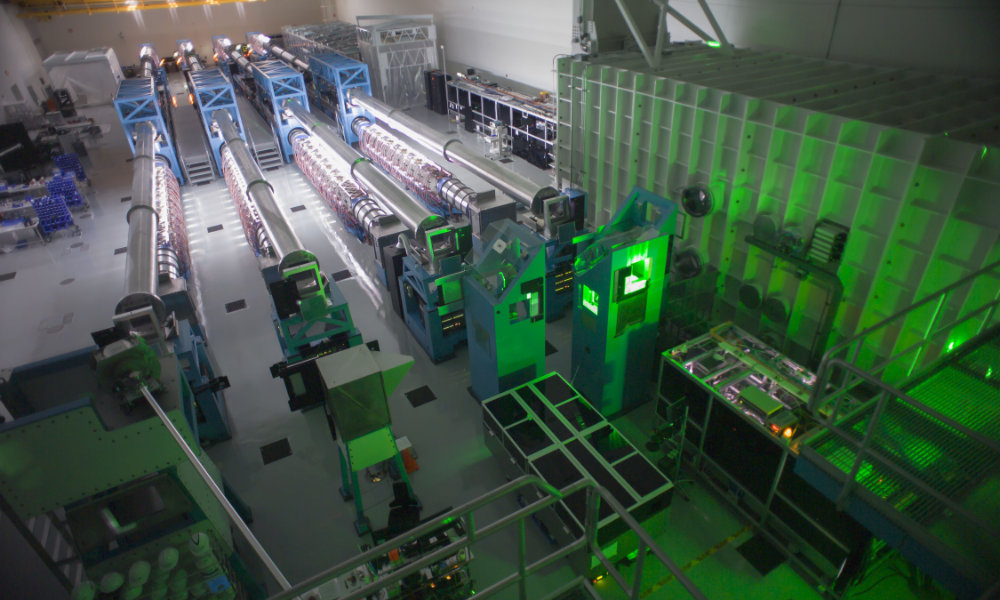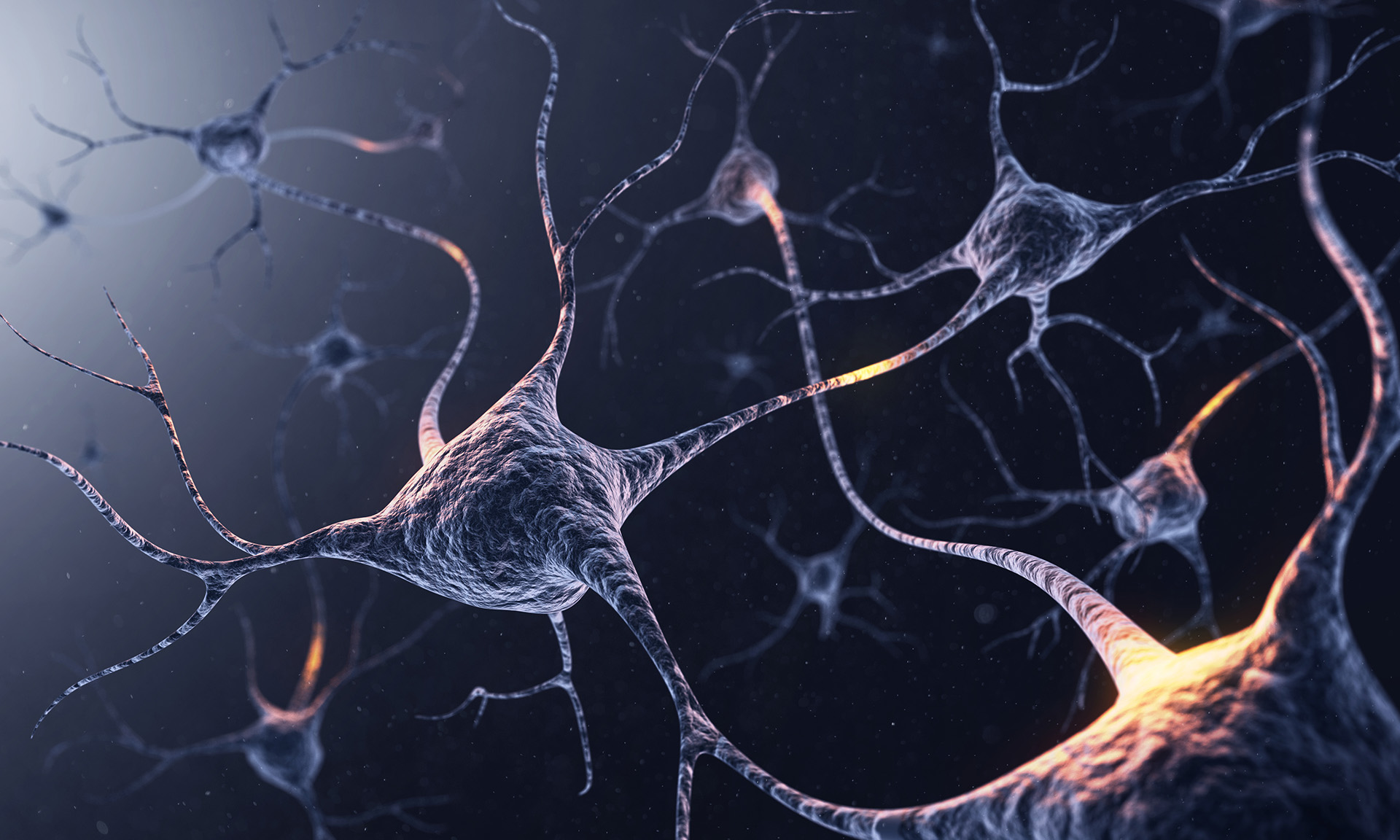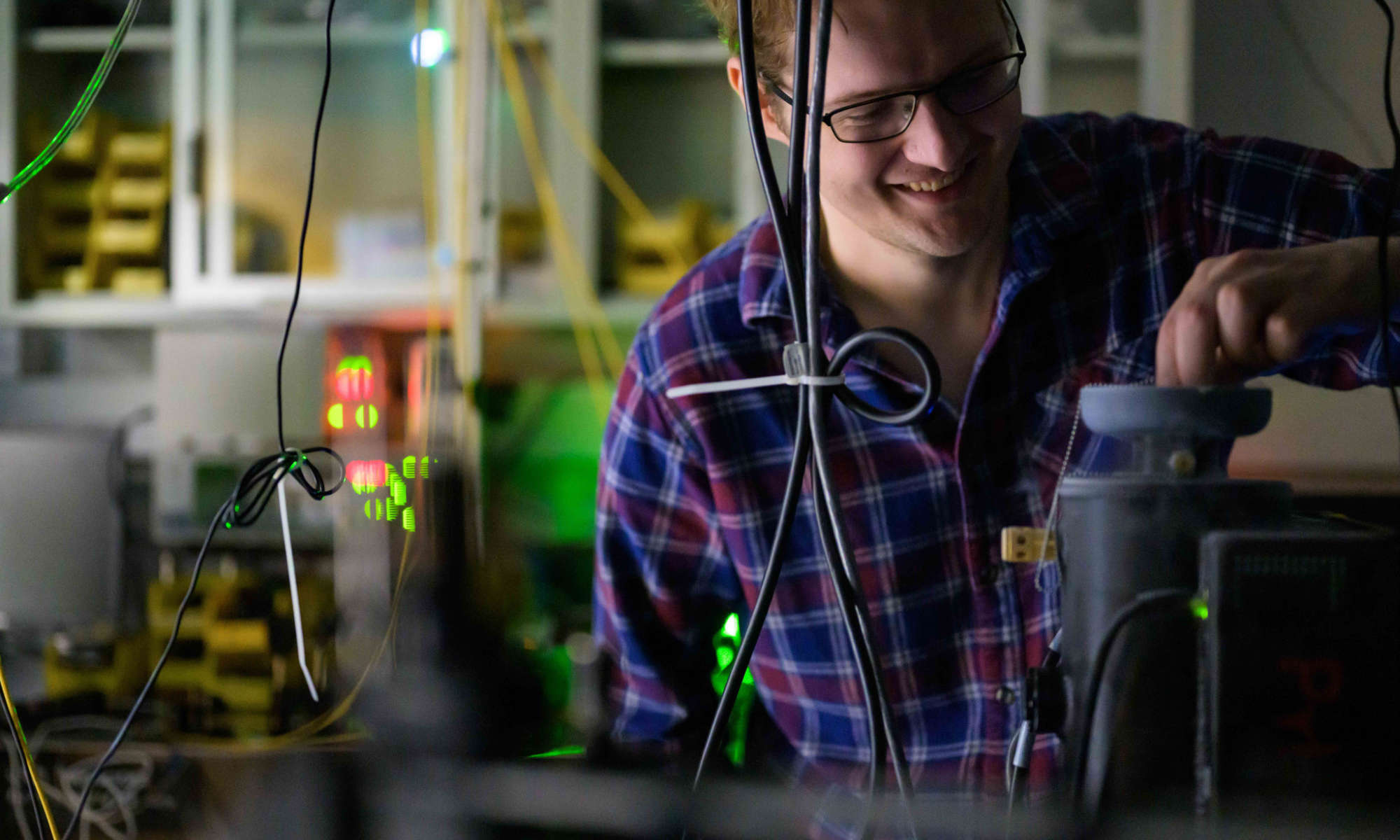The funding, distributed among 10 LaserNetUS institutions, will provide beamtime for researchers across the globe to conduct laser experiments using network facilities.
What is LaserNetUS?
LaserNetUS, established by the Department of Energy in 2018, is a network of the most powerful laser facilities in North America, and designed to accelerate research in the field of high-energy-density plasma science by expanding use of the specialized laser facilities essential to such studies.
In addition to the University of Rochester’s OMEGA EP laser, LaserNetUS includes facilities at Colorado State University, Lawrence Berkeley National Laboratory, Lawrence Livermore National Laboratory, SLAC National Laboratory, The Ohio State University, University of Michigan, University of Nebraska–Lincoln, Institut National de la Recherche Scientifique, and University of Texas at Austin.
The University of Rochester’s Laboratory for Laser Energetics (LLE) is one of 10 recipients in the LaserNetUS that has recently been granted a three-year collective award of $18 million from the US Department of Energy (DOE) Office of Fusion Energy Sciences (FES).
The funds, which will be distributed among the 10 participating institutions, will allow the LLE and the other nine LaserNetUS partner organizations to expand user access to their laser facilities for frontier research and student training. The findings from these experiments could have a broad range of applications in basic research, advanced manufacturing, and medicine.
Of the total $18 million for three years, $17 million will be devoted to funding facility operations, with an additional $1 million to provide user support, such as travel expenses.
The DOE established LaserNetUS, a network of facilities operating ultra-powerful lasers, in 2018. The new network was created to provide vastly improved access to unique lasers for researchers, and to help restore the US’s once-dominant position in high-intensity laser research. LLE, home of the Omega Laser Facility, was included in the network.
“We are honored and excited to have one of our lasers, the four-beam, high-energy, and high-intensity OMEGA EP laser, as part of the LaserNetUS network,” says Michael Campbell, director of Rochester’s LLE. “We congratulate FES for the vision and continued commitment that will enable the US to maintain world leading science and educate future leaders in this important field.”
Six LaserNetUS user experiments have already been successfully conducted at LLE over the last 12 months. With the new funding, LLE will continue to provide LaserNetUS users with time on the OMEGA EP laser beam over the next three years.
The LaserNetUS network of high-intensity lasers
LaserNetUS includes the most powerful lasers in the US and Canada, some of which have powers approaching or exceeding a petawatt. Petawatt lasers generate light with at least a million billion watts of power, or nearly 100 times the combined output of all the world’s power plants but compressed in the briefest of bursts. These lasers fire off ultrafast pulses of light shorter than a tenth of a trillionth of a second.
All facilities in LaserNetUS operate high-intensity lasers, which have a broad range of applications in basic research, advanced manufacturing, and medicine. The lasers can recreate some of the most extreme conditions in the universe, such as those found in supernova explosions and near black holes. They can generate particle beams for high-energy-density physics research or intense x-ray pulses to probe matter as it evolves on ultrafast time scales.

The lasers are also being used to develop new technology, such as techniques to generate intense neutron bursts to evaluate aging aircraft components or implement advanced laser-based welding. Several LaserNetUS facilities, including LLE, also operate high-energy longer-pulse lasers that can produce exotic and extreme states of matter like those in planetary interiors or many-times-compressed materials; they can also be used to study laser-plasma interaction, which is important to fusion energy programs.
In its first year of user operations, LaserNetUS awarded beamtime for 49 user experiments to researchers from 25 different institutions. More than 200 user scientists, including more than 100 students and post-docs, have participated in experiments so far. All proposals are peer reviewed by an independent external panel of national and international experts.
“LaserNetUS initiative is a shining example of a scientific community coming together to advance the frontiers of research, provide students and scientists with broad access to unique facilities and enabling technologies, and foster collaboration among researchers and networks from around the world,” says James Van Dam, DOE Associate Director of Science for Fusion Energy Sciences. “We are very excited to work with all of these outstanding institutions as partners in this initiative.”
The US has been a pioneer in high intensity laser technology, and the LLE was home to research by Donna Strickland and Gerard Mourou that was recognized by the 2018 Nobel Prize in Physics. The network and future upgrades to LaserNetUS facilities will provide new opportunities for US and international scientists in discovery science and in the development of new technologies.
About the University’s Laser Lab
The LLE was established at the University in 1970 and is the largest U.S. Department of Energy university-based research program in the nation supported by the National Nuclear Security Administration as an integral part of its Stockpile Stewardship Program.
As a center for the investigation of the interaction of intense radiation with matter, LLE is a unique national resource for research and education in science and technology. Current research includes exploring fusion as a future source of energy, developing new laser and materials technologies, and better understanding high-energy-density phenomena. In addition to its vital roles in various areas of scientific research and its support of the local high-tech economy, the LLE plays an important role in educating the next generation of scientists and engineers.
As the DOE National Laser Users’ Facility (NLUF), LLE hosts scientists and students from across the nation and around the world to carry out fundamental research, training, and education. Additional facility access for qualified external researchers is made possible through LLE’s participation in LaserNetUS.
Read more
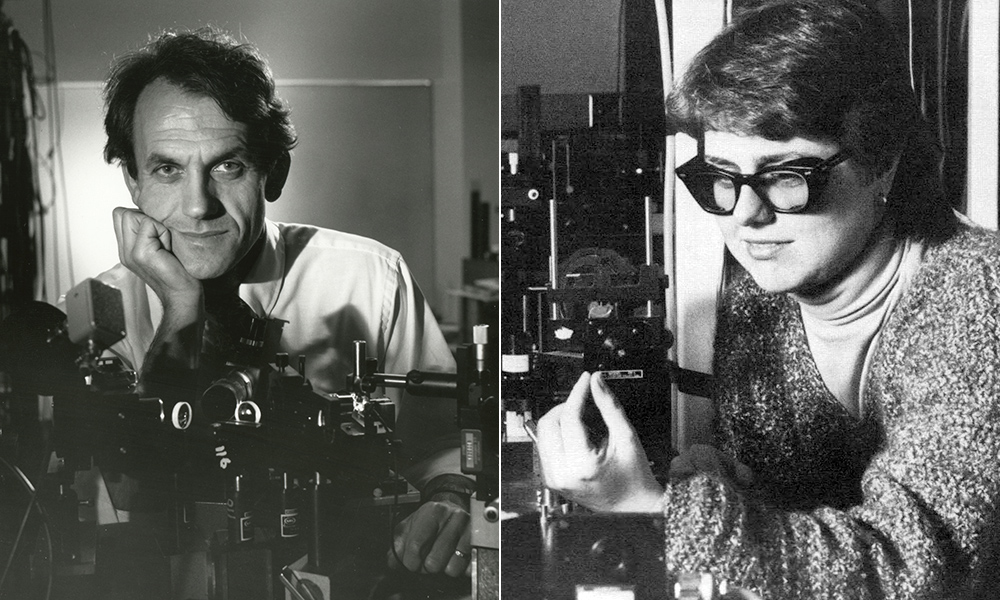 Rochester breakthrough in laser science earns Nobel Prize
Rochester breakthrough in laser science earns Nobel PrizeUniversity of Rochester graduate Donna Strickland ’89 (PhD) and former optics faculty member Gérard Mourou shared the 2018 Nobel Prize in Physics for work they undertook at the Laboratory for Laser Energetics.
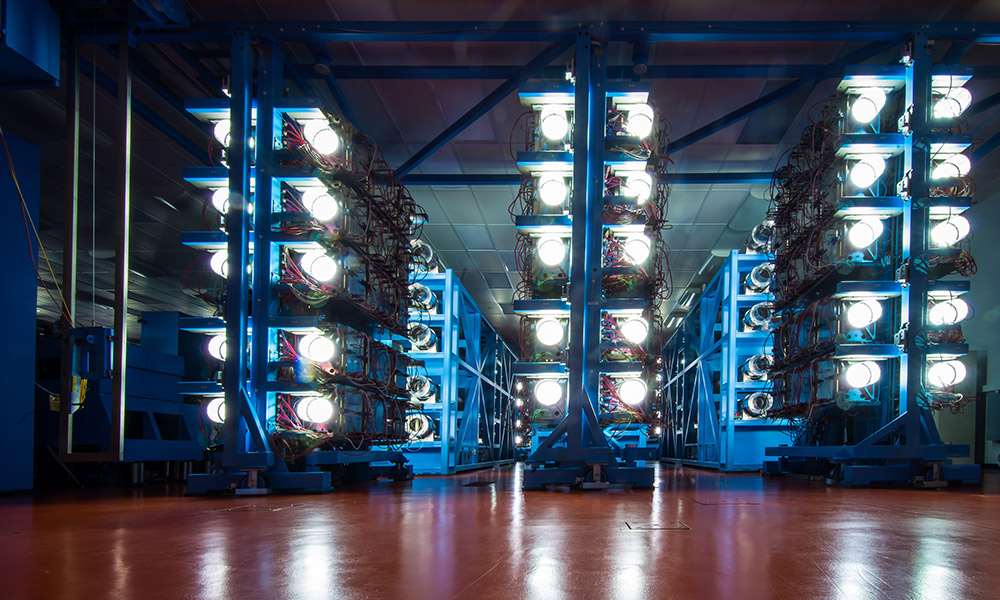 When laser beams meet plasma: New data addresses gap in fusion research
When laser beams meet plasma: New data addresses gap in fusion researchScientists at the Laboratory for Laser Energetics and their colleagues in California and France have directly demonstrated for the first time how laser beams modify the conditions of a plasma.
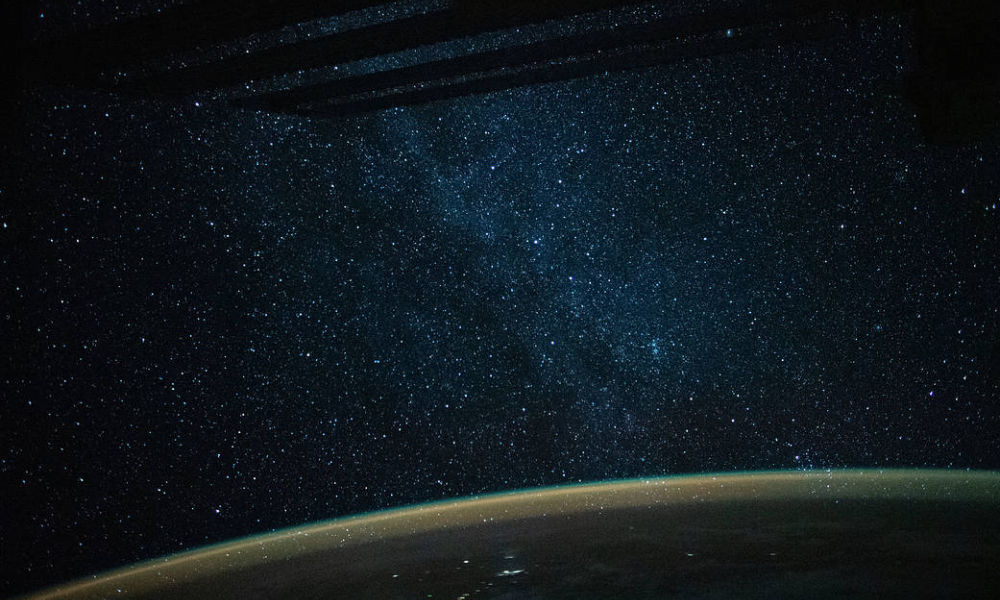 New laser technique will allow more powerful—and smaller—particle accelerators
New laser technique will allow more powerful—and smaller—particle acceleratorsResearchers at the Laboratory for Laser Energetics have outlined a method to shape intense laser light in ways that could lead to tabletop experiments to probe the Higgs boson and explore the existence of extra dimensions.


